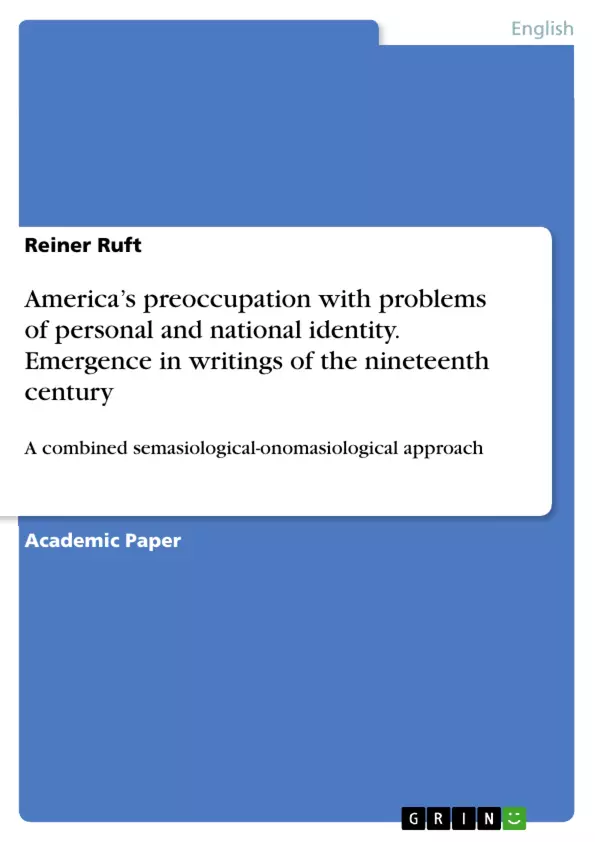In modern America, "identity" is a constant preoccupation, one might even say an obsession. Individuals, communities, racial minorities, even towns and cities (like Boston) and, of course, the whole nation affirm and assert their identity, or indeed complain their lack of it.
Inhaltsverzeichnis (Table of Contents)
- The Emergence of Modern America's Preoccupation with Problems of Personal and National Identity in the Writings of Her Nineteenth Century Authors
- Identity: A Modern Obsession
- The Definition of Identity
- Identity in Literature
- The Semasiological-Onomasiological Approach
Zielsetzung und Themenschwerpunkte (Objectives and Key Themes)
This text aims to investigate the emergence of the American preoccupation with identity in the writings of nineteenth-century authors. It explores the complex and evolving concept of identity as it was understood and expressed during this period, examining its role in both personal and national narratives.
- The evolution of the concept of "identity" from its historical roots to its modern usage in literature and psychology.
- The impact of nineteenth-century social and political changes on the American understanding of identity.
- The way in which nineteenth-century authors, such as Hawthorne, Melville, and Whitman, utilized the concept of identity in their works.
- The differences and similarities between the concept of identity as it is perceived in literature and the concept of identity as it is defined by psychologists and sociologists.
- The development of a semasiological-onomasiological approach to the study of identity in literature.
Zusammenfassung der Kapitel (Chapter Summaries)
- The Emergence of Modern America's Preoccupation with Problems of Personal and National Identity in the Writings of Her Nineteenth Century Authors: This chapter explores the emergence of the American preoccupation with identity in the modern era, tracing the evolution of the concept and its influence on literature and society.
- Identity: A Modern Obsession: This chapter examines the rise of the word "identity" as a prominent term in modern culture, particularly in literary scholarship. It explores the various interpretations and applications of the term and its place in various fields of study.
- The Definition of Identity: This chapter delves into the definition of "identity," examining its complex nature and its varying interpretations in psychology, sociology, and philosophy. It highlights the key contributions of figures like Erikson and James, who have shaped our understanding of identity.
- Identity in Literature: This chapter explores the use of "identity" in nineteenth-century American literature, focusing on the works of prominent authors such as Irving, Hawthorne, Melville, Whitman, and Dickinson. It analyzes the different ways these authors utilized the concept of identity in their narratives.
- The Semasiological-Onomasiological Approach: This chapter proposes a combined semasiological-onomasiological approach for studying the emergence of the concept of "identity" in literature. It outlines the methodology and its potential benefits in understanding the development of the concept over time.
Schlüsselwörter (Keywords)
Key words and concepts explored in this text include: identity, American identity, nineteenth-century literature, semasiological-onomasiological approach, literary criticism, psychology, sociology, philosophy, Erikson, James, Hawthorne, Melville, Whitman, Dickinson.
- Quote paper
- Reiner Ruft (Author), 1974, America’s preoccupation with problems of personal and national identity. Emergence in writings of the nineteenth century, Munich, GRIN Verlag, https://www.grin.com/document/514788



